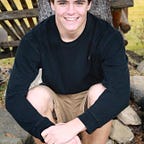Mathematics can assist cities in addressing unstructured neighborhoods
This article is about a mathematical model that explains how the build a healthy and sustainable infrastructure in urban cities. It focuses on but is not limited to the poverty of low income societies. It talks about how the model reveals different obstacles in the unplanned areas and provides resources for the for basic human need. It talks about how this model picks out what is wrong and how to build a strong infrastructure in a community. This is important because the model shows exactly what parts need help and what parts could take a little less. In the idea of the model it would be creating a world where all communities are equally solidified.
What aspects go in to the infrastructure of a community?
What will the model show?
What are some techniques to improve a communities infrastructure?
It applies to understanding the American experience. It applies to this because it is talking about how to improve communities which would improve the total American experience.
Montana Mathematics Content Standards for Mathematical Practice: Grades 9–12 Explanations and Examples: HS.MP.4. Model with High school students can apply the mathematics they know to solve problems arising in everyday life, society, and the workplace. mathematics. By high school, a student might use geometry to solve a design problem or use a function to describe how one quantity of interest depends on another. High school students making assumptions and approximations to simplify a complicated situation, realizing that these may need revision later. They are able to identify important quantities in a practical situation and map their relationships using such tools as diagrams, two-way tables, graphs, flowcharts and formulas. They can analyze those relationships mathematically to draw conclusions. They routinely interpret their mathematical results in the context of the situation and reflect on whether the results make sense, possibly improving the model if it has not served its purpose.
Students are expected The Standards for Mathematical Practice describe ways in which students ought to engage with the subject matter as they grow in to: mathematical maturity and expertise.
The technique I would use would be the KWL technique. I would have the students start of by writing down what they know about how to improve the infrastructure of a community. Then have the students read the article and do further research on the model. Have each student write out an idea that would improve the infrastructure of a unstructured and low income infrastructure. Then have each student present their idea and write their ideas on the board in the front. At the end of the class the teacher can talk with them about each of the ideas and how or if they would help. Have the students finish by writing what they had learned about improving the infrastructure of a community. This would force the students to research and review a mathematical model. Make them run the model and be able to read the results of the model to help get their idea on how to improve the infrastructure. This would show the teacher what students understand models and what students need more practice with models.
